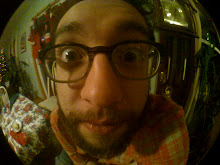Figures in Flux, Variations of the Body Palette
This collection of work brought together in the exhibition of, Figures in Flux, Variations of the Body Palette, is an insight to how the human figure is used in video based media. Video performance artists use the body in a variety of ways to express their intentions. The body can be used as a tool, prop, or as a site. The body as subject matter can take on many different forms depending on the type of media being used. The body can be used as a sculptural form, as a canvas to be painted on, or any combination of media.
This collection brings works together by the artists Otto Muelh, Paul McCarthy, Yoko Ono, Cheryl Donegan and Bruce Nauman. These artists use the body as a site to produce works of art. They also use the body as an art object, or as a medium in itself. They use body the body like a Sculptor would mold a piece of clay, pinch, stretching, and jiggling the body into an innumerable amount of forms.
Although these videos are about the body, time is also an element used. These performances belong to the moment in which they were created and not a specific group or person. Video was incorporated initially as a way to document a performance, but eventually branched out into its own medium. Performance and video artist have always been concerned with the decomodification of the art object. They believe that art isn’t something to be bought or sold, but that it belongs only to the artist and in the memory of the people that have experience the work.
The artists in this exhibition are working during the post-modern period. This period is known for art concerned with the concept of a piece. The concept is just as or if not more important than the actual work created. This type of work made creating art more accessible to more people because all it requires is a good idea and a camera, where as previous to this period art was made by people whom had the means to acquire specialized training in the arts.
Tuesday, December 15, 2009
Pinch Neck, from 1968, is a video by Bruce Nauman. In this video Nauman pinches and pulls at the skin of his neck and face to create sculpture from the body. Every shape that is made is new and different sculpture from the last. The focus of this work is the body and what can be created using the minimal amount components.
Nauman and his contemporaries were champions of the postmodern period. This period is known for artists move away from commoditized objects and towards art that only exists in the realm of the intellect. This type of art could only be bough or sold if a person acquired a copy of the performance. The performance or art object only belongs to the artist; the only thing that can be bought is a copy, for the original only exists as long as Nauman’s actual neck is alive.
Although Nauman is using his own body, his work is not pacifically about his own body or even the generalized body. According to Willoughby Sharp, a well known and respected artist and art critic; “In body works, the body per se is not as important as what is being done with the body”. The body in this case is a site in which art is created. The body is the medium, not the work of art. When the artist pushes and pulls at the skin, the molded shape he creates is the art object, and this object only last as long as the artist holds the position.
Kardinal, from 1967, is a video by Austrian artist, Otto Muehl. Muehl uses the body in a number of ways, most interestingly as a canvas to paint on. Performance is incorporated into his paintings to create a live ness to the work. He layers different materials on the head of the participants to transform them into a type of living Jackson Pollock painting. The layers appear at first viewing to be random, but are actually strategically layered to create volume and mass. With each additional layer the figure becomes a new painting.
Sexuality is another component to Muehl’s work. He incorporates his live paintings with ritualistic orgies to create an ever-changing scene. He continues to paint on the participants of the orgy while it is happening to create a new painting with every smear.
Muehl was a member of the Vienna Actionists. Other prominent film and performance artists of this group include Gunter Brus, Hermann Nitsch, and Rudolf Schwarzkogler. These artists are probably best remembered for the willful transgression of naked bodies and violence. Many participants of these performances were imprisoned by the state for short periods of time because of their violations of decency laws.
The Actionists wrote a manifesto, which was primarily written by Muehl. One of its tenant’s states: “Material action is painting that has spread beyond the picture surface. The human body, a laid table or a room becomes the picture surface. Time is added to the dimension of the body and space”.
Subscribe to:
Comments (Atom)
